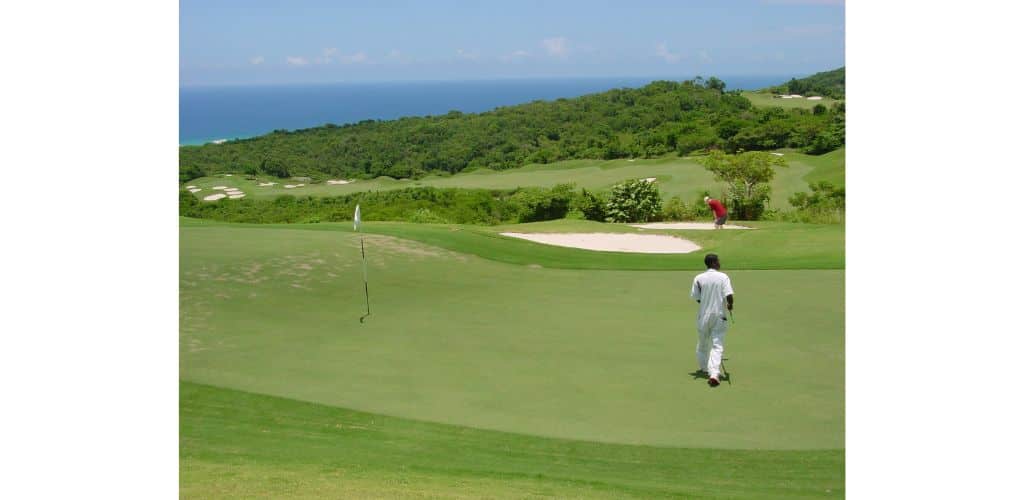Congressmen Brian Fitzpatrick (R-PA) and Jimmy Panetta (D-CA) have introduced the Bolstering Intellectual Rights against Digital Infringement Enhancement (a.k.a. the BIRDIE Act), which proposes amending the definition of “architectural works” under US copyright law to include golf course designs.
In 1990, Congress extended copyright protection to certain architectural works with the Architectural Works Copyright Protection Act.
By adding architectural works to the types of works with copyright protection, Congress helped satisfy some of the requirements under the Berne Convention for the Protection of Literary and Artistic Works. Under prior US copyright law, technical drawings of architectural works (i.e., blueprints) were protected as pictorial, graphic, or sculptural works, but protection covered only the drawings and not the structures built from such drawings.
Copyright law protects certain architectural works created on or after December 1, 1990, subject to some limitations.
As the Library of Congress blog explains,
Copyright law protects the overall form of a building—the exterior façade from all angles—along with the composition of the interior architecture, which includes the arrangement of walls and other permanent structures that divide the interior into separate rooms and spaces. Individual standard features like windows and doors and standard space configurations are not protectable under copyright, and neither are purely functional features.
Under 17 U.S. Code § 101,
An “architectural work” is the design of a building as embodied in any tangible medium of expression, including a building, architectural plans, or drawings. The work includes the overall form as well as the arrangement and composition of spaces and elements in the design, but does not include individual standard features.
The BIRDIE Act would amend this section as follows:
- by striking “drawings.” and inserting “drawings, and the design of a course on which golf is played (except for any course on which mini golf, or other similar game, is played) as embodied in any tangible medium of expression, including an architectural plan or drawing”; and
- by striking “features.” and inserting “features. In the case of a course on which golf is played, the work also includes any of the following that is part of the course:
- “Landscaping.
- An irrigation system.
- A path.
- A golf green.
- A tee.
- A facility in which golf is practiced.
- A bunker.
- A lake.
- A topographic feature.”.
As with other forms of architectural works, the Act would be retroactive to cover golf courses built after December 1, 1990. Older courses, some of which are famous, thus wouldn’t be covered by the Act.
If enacted, the Bill would mean that virtual golf courses in video games and golf simulators would need to be licensed from the real golf course owner. If not, the companies that make such games and simulators could be sued for copyright infringement.
Under copyright law, a copyright owner must register a work with the US Copyright Office before suing to enforce the copyright. Damages may be measured as actual damages (the amount that the copyright owner was hurt), which can be hard to measure. Alternatively, a copyright owner can claim statutory damages of $750 to $30,000 per act of infringement. Damages can be increased to $150,000 per infringing act if the infringement is found to be willful.
The American Society of Golf Course Architects (ASGCA) leaders, unsurprisingly, fully support the Act.
According to past-president Jan Bel Jan,
The BIRDIE Act isn’t just good for golf course architects, it’s good for golf course owners as well. It acknowledges golf courses for what they are: creative works of art. Golf course architecture isn’t just planned on paper; it’s also created on site by visionaries making the most of a setting. While physical plans can be copyrighted, decisions made in the field cannot. So, it makes sense that a finished golf course would be protected as well.
Information about registering copyright for architectural works can be found in section 926 of the Compendium of U.S. Copyright Office Practices, Third Edition.
Just like the haiku above, we like to keep our posts short and sweet. Hopefully, you found this bite-sized information helpful. If you would like more information, please do not hesitate to contact us here.


